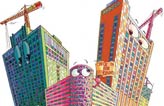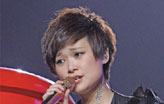Business
Hangzhou pushes creativity with purchase of bauhaus artworks
Updated: 2011-06-03 10:47
By Yan Yiqi (China Daily)
BEIJING - It is the capital of East China's prosperous Zhejiang province and a hub for the country's manufacturing industries, but Hangzhou is now looking to nurture more creative talent to tag more "original" labels to its products.
To that effect, the city recently purchased 7,010 pieces of artwork under the Bauhaus style worth 55 million euros ($79.7 million) from German collector Torsten Broehan and cooperated with the China Academy of Art (CAA), which is considered one of the best art academies in the country. The artworks include furniture, vessels, stamps and posters, dating from the 1850s to the end of the 20th century.
Many of the pieces, which made their public debut on May 11, are considered landmarks of the design industry. One of them is the Red and Blue Chair designed by Gerrit Rietveld in 1917, a work that signaled a radical change in architectural theory and represents one of the first explorations in three dimensions.
The arrival of the Bauhaus collection is significant for Zhejiang and even China, CAA president Xu Jiang said.
"They are not merely pieces of silent artworks. They are the sources of China's own creativity, which can be further applied to manufacturing," Xu said at a recent press conference.
"We are trying to show that China is not only buying advanced technology and facilities from the Western world. We are also buying sources of advanced thought," he said.
The CAA also plans to build a 120,000-square-meter art gallery with 60 million yuan ($9.3 million) for the collections by 2013, with a research institute and doctorial branch related to Bauhaus research. Doctoral candidates are now being recruited.
The moves are expected to boost Hangzhou's efforts to turn itself into a national center for the creative and cultural industries.
Before the purchase, Hangzhou already made efforts to develop the cultural and creative industries. By the end of 2009, 10 creative industry clusters covering 2.75 million square meters had been established and attracted 837 companies.
The sector has gradually become a pillar industry of Hangzhou. According to statistics, its added value hit 64.2 billion yuan in 2009, accounting for 12.6 percent of the city's GDP.
"The purchase is a milestone for the development of Hangzhou's creative industry. It will help Zhejiang's manufacturing industries upgrade to a higher level, from 'Made by Zhejiang' to 'Created by Zhejiang'," said Chen Zhenlian, deputy director of the Standing Committee of the Hangzhou People's Congress.
"China's manufacturing industry is still at the end of the industrial chain of global manufacturing, although China is considered a world factory. And innovation is the key to solve this problem," said Zhu Hongren, a former senior official at the Ministry of Industry and Information Technology.
Zhejiang's strength in manufacturing and the sector's added value accounts for nearly 50 percent of the province's GDP, but lack of original design has hindered the development of companies. Official statistics show that nearly 40 percent of the country's "copycat products" are from Zhejiang.
"Our academy has the obligation to provide creative ideas to the manufacturing products of Zhejiang province. We want to bring the goods of cities like Yiwu to become unique and original products of this province," Xu said.
The academy plans to hold an international workshop on educational Bauhaus experiments in October. One of the main themes of the workshop is to digitize the artwork and build models to better realize their industrialization.
Manufacturers in Yiwu, considered China's largest producer of wholesale products, welcome the creative push.
"I don't really understand how the so-called Bauhaus collections will be related to us, but we will definitely welcome the designers to help us with the development of new products," said Huang Lijun, vice-chief of the Yiwu Commodity Trade Association, who is also the owner of a commodity company.
Huang said that although most manufacturers in Yiwu are aware of the importance of original design for their products, they seldom have access to top designers.
"We do not like to be referred to as copycats either," he said.
"The Bauhaus artworks will definitely be the symbol of Hangzhou as the 'capital of the creative industry', because this kind of collection has never been seen in any other city in Asia," said Wang Yun, dean of the Department of Industrial Design at CAA.
"Bauhaus marked the point when the world entered the age of modern industrial design. Though the School of Bauhaus lasted for a very short time, it became the mainstream of modern design by applying art to large-scale industrial production," Wang said.
The pieces will be helpful in inspiring China's future designers, he said.
"Although Bauhaus is inevitably mentioned during the teaching of design courses in almost all design departments in China, students only had access to simplified pictures of Bauhaus works," Wang said.
"Now we can show the actual pieces to them and let them understand the masterpieces by touching them and feeling the materials and structure."
China Daily
Specials

Room at the inn
The Chinese hotel industry experiences a building boom, prompting fears of oversupply.

Pearls of wisdom
Chinese pearl farmers dominate the world market but now want to work smarter, not harder

Truly a super woman
Li Yuchun first came to prominence in 2005 as the Super Girl winner, and since then has become an international star.